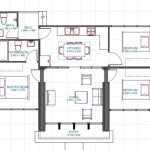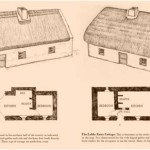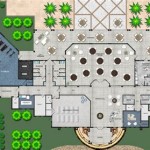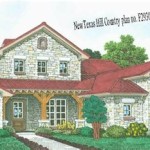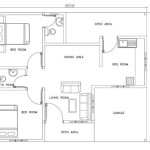Essential Aspects of Row House Floor Plans in Philadelphia
Row houses, a quintessential part of Philadelphia's urban landscape, offer a unique living experience with their vertical orientation and shared walls. When considering purchasing or renting a row house, it's essential to understand the fundamental aspects of their floor plans.
General Characteristics:
Row houses in Philadelphia typically feature:
- Narrow, rectangular footprints of approximately 15-20 feet wide.
- Three to four stories, including a basement.
- Shared party walls on both sides, limit windows and natural light in certain areas.
- Common architectural details such as bay windows, cornices, and decorative brickwork.
Traditional Floor Plan:
The traditional row house floor plan comprises:
- Basement: Utility space, storage, or additional living area.
- First Floor: Formal living room, dining room, or combined open-concept space.
- Second Floor: One or two bedrooms, a bathroom, and sometimes a small sitting area.
- Third Floor: Additional bedrooms, bathrooms, or a loft-like space.
- Rear Addition: A modern addition off the kitchen that provides additional space, often used as a family room or dining area.
Variations and Modern Adaptations:
While the traditional floor plan remains common, contemporary row houses incorporate modifications and expansions to suit evolving lifestyles.
- Open Floor Plans: Removing walls between the living room, dining room, and kitchen creates a more spacious and airy environment.
- Rooftop Decks: An extension of living space, offering panoramic city views and an outdoor retreat.
- Lower-Level Living: Converting the basement into a habitable space, with amenities like bedrooms, bathrooms, or media rooms.
- Second Master Suites: Providing two equally sized and well-appointed master bedrooms for added convenience.
Key Considerations:
When evaluating row house floor plans, consider the following factors:
- Natural Light: The limited number of windows in the central part of the house may impact natural light. Consider augmented lighting solutions.
- Layout and Flow: Ensure the floor plan suits your lifestyle and allows for seamless transitions between spaces.
- Storage Solutions: Optimize vertical space with built-in shelves, closets, and multi-purpose furniture to address storage needs.
- Outdoor Space: Many row houses offer small courtyards or rear gardens. Determine if this aligns with your outdoor needs.
Conclusion:
Row house floor plans in Philadelphia offer a rich blend of traditional charm and modern adaptations. Understanding the essential aspects, variations, and key considerations will empower you to make an informed decision that aligns with your lifestyle and preferences. Embrace the unique living experience that these historic homes provide.

Floor Plans Our Philly Row

Floor Plans Our Philly Row

Philadelphia Row Home Floor Plan

Floor Plans Our Philly Row

Bankbox Townhouse Philadelphia Pa Row House Trinity Floor Plans

Before Secondflrplan Jpg Image Row House Floor Plans

Single Family Rowhouse Complete At 2141 Catharine Street In Graduate Hospital South Philadelphia Yimby

Row House Layout Bing Images Floor Plans

Modern House Plans By Gregory La Vardera Architect Row Concept Looking Back

Community Design Collaborative Our Work

